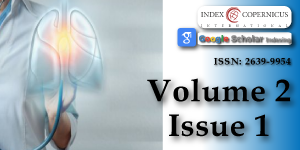Peculiarities of photon emisson of whole non-diluted human blood obtained from healthy donors and patients with some diseases
Main Article Content
Abstract
Blood plays an important role in oxygen absorption and its transfer to organs and tissues in vertebrates, as well as in a number of invertebrate species. Numerous interactions between cellular and non-cellular blood components constantly occur. A special role in these interactions belongs to erythrocytes and leukocytes, between which oxygen is constantly exchanged and activated, which we showed directly in whole blood. Blood is a liquid tissue, which is a complex cooperative system and has many inherent functions and the most important one is the ability to maintain the homeostasis of the body. Our experience has shown that despite its high optical density, undiluted blood of humans and animals can be a source of radiation due to the transformation of the energy of electron-excited (EEE) states and secondary processes occurring in the whole blood system. Parameters of this radiation - ultra-weak photons emission (UWPE) from blood - depend upon its physiological properties and reflect the physiological state of a donor. Analysis of UWPE from non-diluted blood is a simple and sensitive method that allows to monitor the course of treatment of a patient. In spite of high opacity of non-diluted blood it may be a strong source of UWPE both in the presence and absence of UWPE enhancers. Analysis of patterns of UWPE from blood reveals its highly non-linear, stable non-equilibrium and cooperative properties. Characteristic of a living system.
Article Details
Copyright (c) 2018 Novikov KN, et al.

This work is licensed under a Creative Commons Attribution 4.0 International License.
Voeikov VL, Novikov CN, Vilenskaya ND. Low-level chemiluminescent analysis of nondiluted human blood reveals its dynamic system properties. J Biomed Opt. 1999; 4: 54-60. Ref.: https://goo.gl/UL1Mw8
Voeikov VL. Reactive Oxygen Species (ROS): Pathogens or Sources of Vital Energy? Part 1. ROS in Normal and Pathologic Physiology of Living Systems. J Altern Complement Med. 2006’ 12: 111-118. Ref.: https://goo.gl/119vXP
Voeikov VL, Asfaramov R, Bouravleva EV, Novikov CN, Vilenskaya ND. Vilenskaya N.D. Biophoton research in blood reveals its holistic properties. Indian J. Exp. Biol., 2003; 43: 473-482. Ref.: https://goo.gl/VQhwD3
Voeikov VL, Novikov CN, Siuch NI, Alterations in Luminol-enhanced CL from nondiluted whole blood in the course of low-level laser therapy of angina pectoris patients. In: Cohn, G.E, Soper, S.A., eds. Ultrasensitive Biochemical Diagnostics II, SPIE Proc. 1997; 2985: 286-294. Ref.: https://goo.gl/wRtsFZ
MacNee W, Tuder RM. New Paradigms in the Pathogenesis of Chronic Obstructive Pulmonary Disease. Proceedings of the American Thoracic. Society. 2009; 6: 527-531. Ref.: https://goo.gl/z7NVkw
Skyba P, Kluchova Z, Joppa P, Petrasova D, Tkacova R. Nutritional status in relation to respiratory impairment and systemic inflammation in patients with acute exacerbations of COPD. Med Sci Monit. 2009; 15: 528-533. Ref.: https://goo.gl/AbJRQD
Cavalcante AGM, de Bruin PFC. The role of oxidative stress in COPD: current concepts and perspectives. J Bras Pneumol. 2009; 35: 1227-1237. Ref.: https://goo.gl/EGueDW
Smirnov VS, Kuzmich MK. Hypoxen. St. Petersburg-Moscow, 2001 (in Russian).
Novikov KN, Berdnikova NG, Novikov AK, Lyusina OY, Muhitova OG, et al. Changes in chemiluminescence of whole blood of COPD patients treated with Hypoxen® and effects of C60 fullerenes on blood chemiluminescence. Med Sci Monit. 2012; 18: 76-83. Ref.: https://goo.gl/twDphn
Zhuravlev AI. Ed. Biochemiluminescence, USSR Acad. of Sci. and Moscow Soc., Nature. 1983; 58: 210-222.
Vladimirov YA. Sherstnev MP. Chemiluminescence of living cells, Moscow, VINITI Publ. House, Series “Biopysics”, 1989; 24.
Cadenas E. Biological chemiluminescence, Photochem. Photobiol. 1984; 40: 823-830, 1984. Ref.: https://goo.gl/UBE3GZ
Bochev BG, Magrisso MJ, Bochev PG, Markova VI, Alexandrova ML. Dependence of whole blood luminol chemiluminescence on PMNL and RBC count. J Biochem Biophys Methods. 1993; 27: 301-309. Ref.: https://goo.gl/VweNJK
Kaever V, Robitzsch JT, Stangel W, Schleinkofer L, Resch K. Simultaneous detection of whole blood chemiluminescence in microtitre plates. Eur J Clin Chem Clin Biochem. 1992; 30: 209-216. Ref.: https://goo.gl/wJLC4x
Descamps-Latscha B, Nguyen AT, Golub RM, Feuillet-Fieux MN. Chemiluminescence in microamounts of whole blood for investigation of the human phagocyte oxidative metabolism function. Ann Immunol (Paris). 1982; 3: 349-364. Ref.: https://goo.gl/LSX3mS
Murphy ME, Sies H. Visible-range low-level chemiluminescence in biological systems. Methods Enzymol. 1990; 186: 595-610. Ref.: https://goo.gl/a6qMCr

